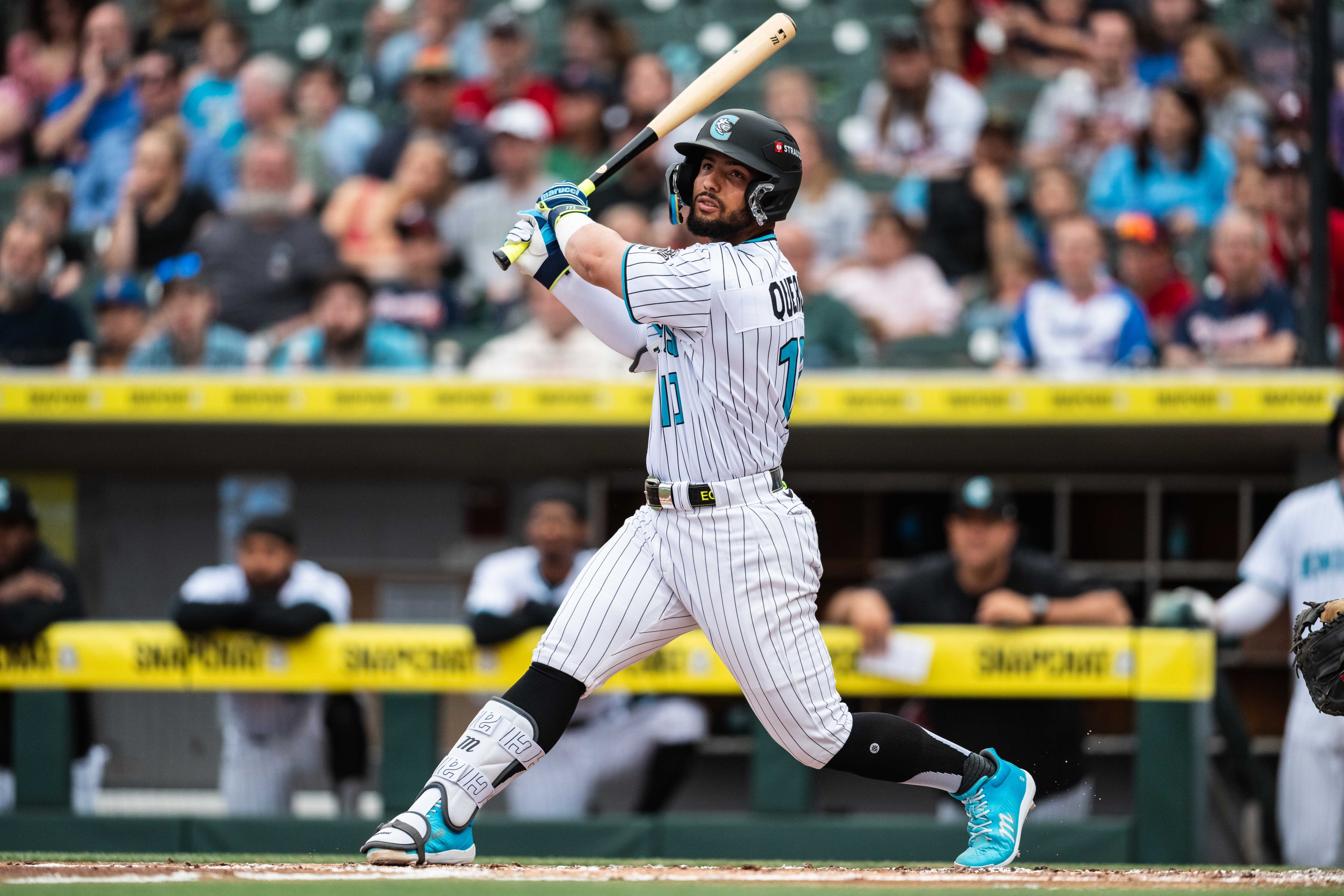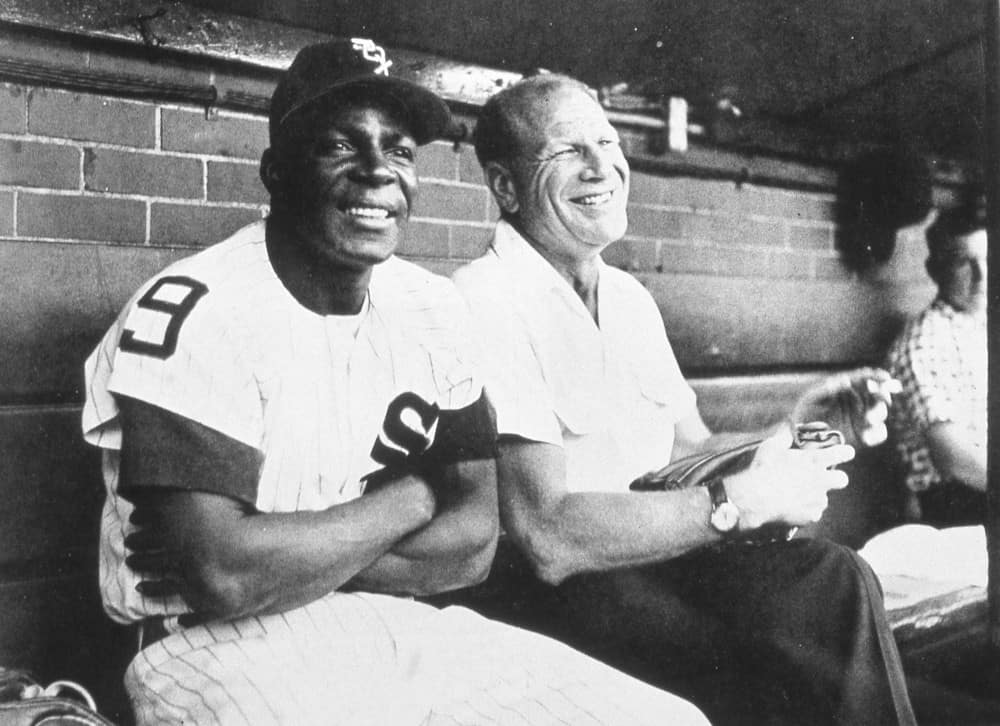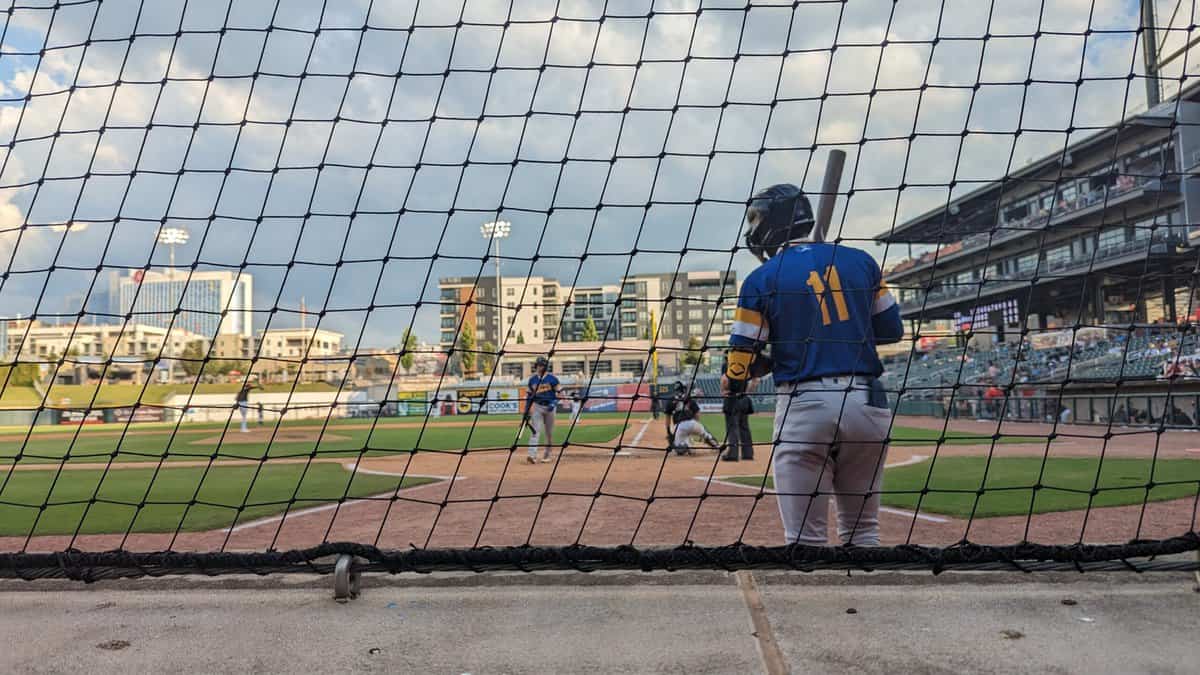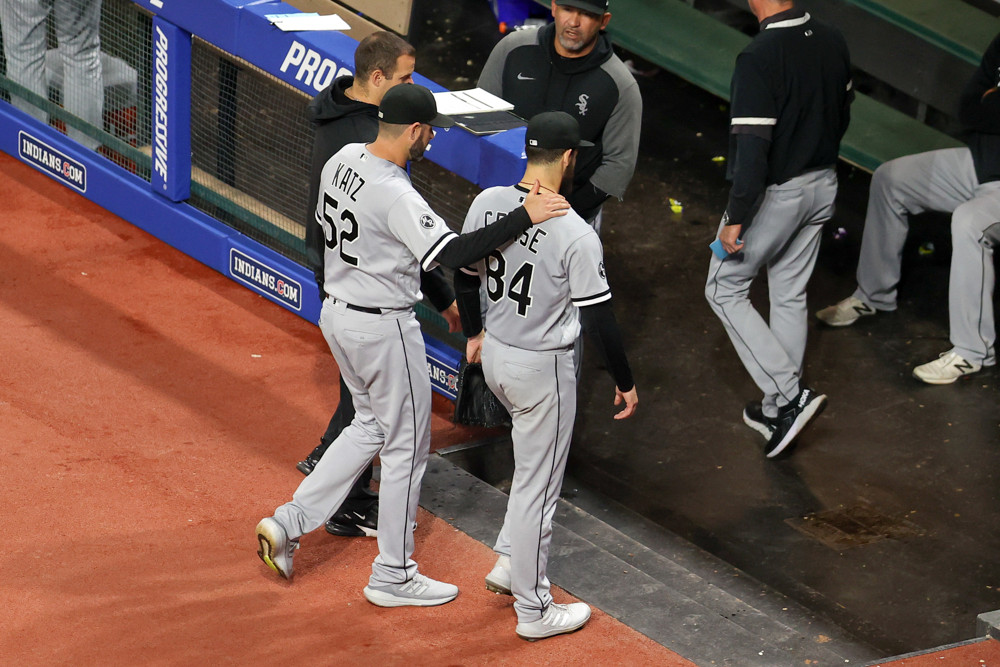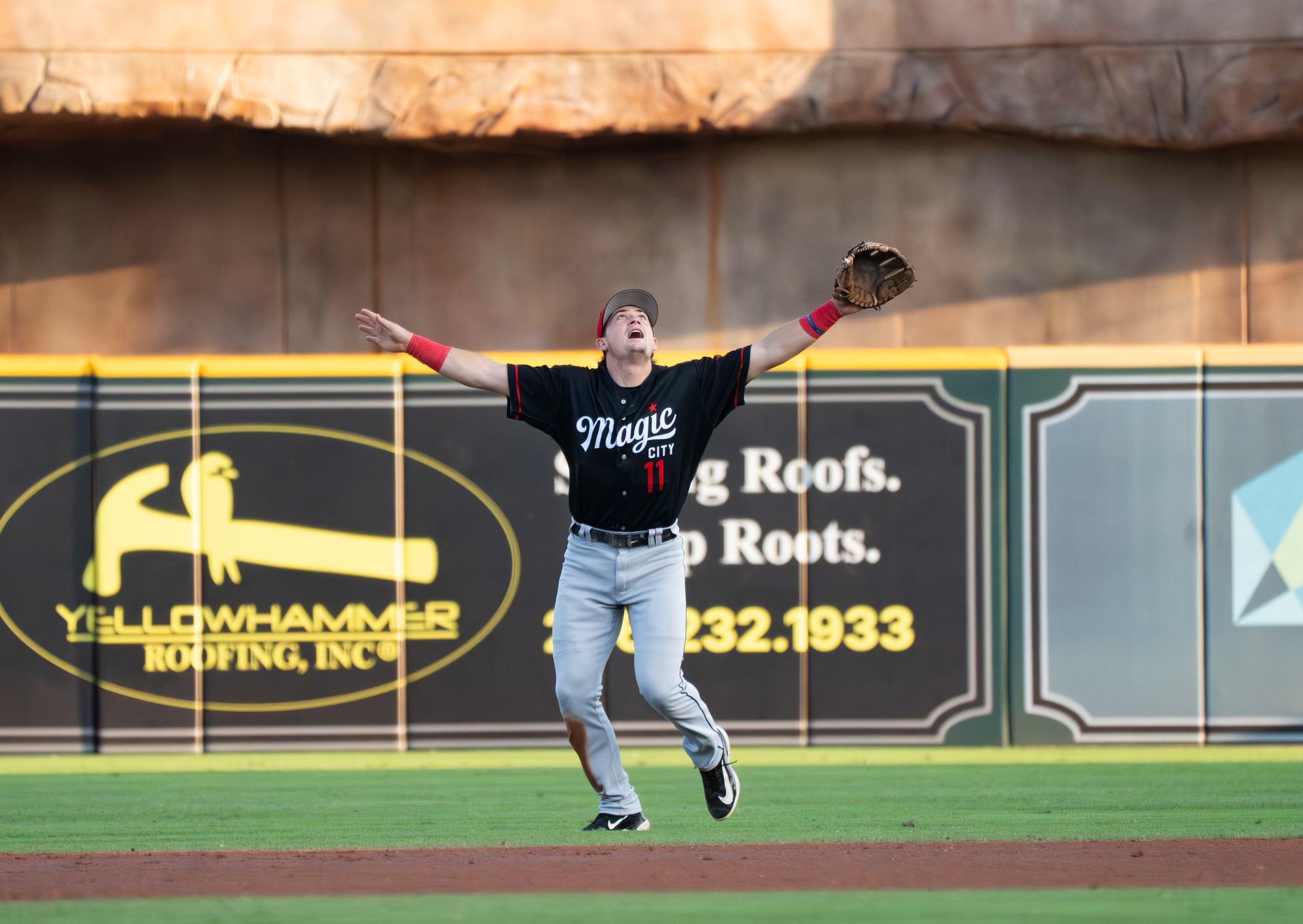Not content with any sort of labeling as the White Sox other top-100 catching prospect, Edgar Quero has spent the early weeks of the season at Triple-A Charlotte getting tons of hits and walks. He's gone 17-of-51 to compile a .333/.444/.412 line in 15 games, and Will Venable confirmed reports that Quero is joining the roster on Thursday and will be in the starting lineup.
"Quality at-bats from both sides of the plate, just a lot of confidence," Venable said of his impressions of Quero. "Just feel like he’s a guy who believes that he’s ready and looks like he’s ready. Obviously we all think that he is."
At the beginning of this current homestand, general manager Chris Getz said that neither Quero nor Kyle Teel were seriously considered as an injury replacement for Korey Lee in Cleveland. But here at the end of it, the newly 22-year-old Quero is a career .308/.405/.445 hitter in all of 41 Triple-A games and can now at least hope to leave the level behind forever.
"Is he coming up? That’s awesome," said Brooks Baldwin, who deserves plaudits for not being addicted to his phone. "He’s a great guy. I spent a lot of time with him last year. Great guy, great hitter, great behind the plate. He’s excelled the last couple years getting better at receiving balls and that’s awesome for him."
As a prospect, Quero has been an odd duck to analyze. Generously listed at 5-foot-10 but with a filled-out frame, he's not a physical freak who has earned his top-100 status for gaudy tools, but has rather just earned respect for putting numbers on the board. He's always been referred to as a bat-first prospect with defensive actions that will betray his youth, but then he'll go ahead and flash a plus pop time on you when you under-regard his physical ability. His top-level exit velocities suggest fringe average power or a little less, yet he hit 17 home runs while catching regularly as a 19-year-old in Low-A, and was threatening a 20-bomb campaign last year across Double and Triple-A until a back injury stopped him at 16 in 98 games.
Quero's origins in the Angels system meant consistently aggressive minor league assignments, and he's responded with a precocious at-bat quality that's meant he's statistically performed at a level and at an age that pretty much only future big league regulars ever pull off. It gives pause seeing that his chase rates have traditionally seen a big spike in two-strike counts, suggesting he's piled up his tremendous walk rates with a passive approach against wild minor league arms. Yet Quero's demeanor at the dish carries a confidence in his strike zone knowledge that defies such a stat-based conclusion, and he'll arrive in Chicago with a .399 OBP for his minor league career.
At a certain point, when a player is performing this consistently, there's nothing else to do but make him prove he can do it at the highest level. He's certainly been asking for it.
"Great teammate," Baldwin continued. "He’s always energetic, never really down on himself. He’s always in the game. I mean, he’s just a guy you want beside you when you’re playing."
Which is not to say the White Sox didn't arrive in spring with no notes for Quero. He ostensibly mashed all last season, but the switch-hitter certainly fattened up against lefties and hit a more mild .262/.351/.424 against right-handers in 2024. Quero spent the spring attacking the mechanical reasons behind the imbalance.
“He has great swing decisions," said director of hitting Ryan Fuller. "Obviously pretty dang consistent from both sides, righty and lefty throughout his minor league career. Shows the ability to hit line drives all over. It’s just making sure he’s getting, especially on his left-hand side, to strong attacking postures. He had a tendency to sometimes land with his shoulders up and his bat path will then be under. Getting him to a strong posture where he can make good swing decisions and have more of those line drive trajectories come out. But this guy is a competitor, believes in himself, knows he’s a big leaguer.”
The line-drive trajectory mention is notable, as it signals the understanding that Quero's power production will stem more from his feel to hit and ability to cajole good pitches rather than a surplus of raw pop to center his approach around. But a bat that can produce 15 homers per year with full-time action while living on base flies over the bar for good offense for a catcher.
Baldwin's mention of receiving work is also fitting, since pitch-framing was the element of his game that the always blunt Quero was vocally unhappy with at the end of last season. In their third straight spring of working together, spanning two organizations, catching coach Drew Butera detailed a host of mechanical changes Quero pulled off with his glove arm and his posture out of the one-knee stance that have better positioned him to yank pitches back into the zone for the umpire.
"He's done a great job of honing his skills and every year he's gotten better at something," Butera said. "Last year, he would come out of [his setup while hiding the target from baserunners] and it makes it harder for him to get back into position to receive. Right now with the earlier load and better position, he puts himself in a position where when he loads, he can stay in it the entire time. That makes him quieter and softer and allows him to work underneath the baseball."
This newer White Sox front office has not been as married as the last to the idea that once top prospects arrive they must play every day, or that going back to Triple-A is an unthinkable anathema to functional player development. But Chase Meidroth's first week in Chicago hasn't found him learning on the bench and Quero doesn't sound like he'll be any different.
It's been a relatively quick pivot from making 40-man roster room for Omar Narváez to come up to seeing him exchange hugs in the Sox clubhouse as Quero nears. Just a few hours earlier on Wednesday, newly added reliever Steven Wilson was lauding Quero and Teel's work in Triple-A and imagining how sharp they'll be when "you give them another month or so."
That transition gives at least a little oxygen to the notion that the team's awful 4-13 start is playing some role in spurring more aggression. But if nothing else, it's proving that unlike last year's awful start, there's something more interesting waiting on the other side.
"I'm confident because I did a real good job last year," Quero said in spring. "And I'm working on preparing myself for the next step."
